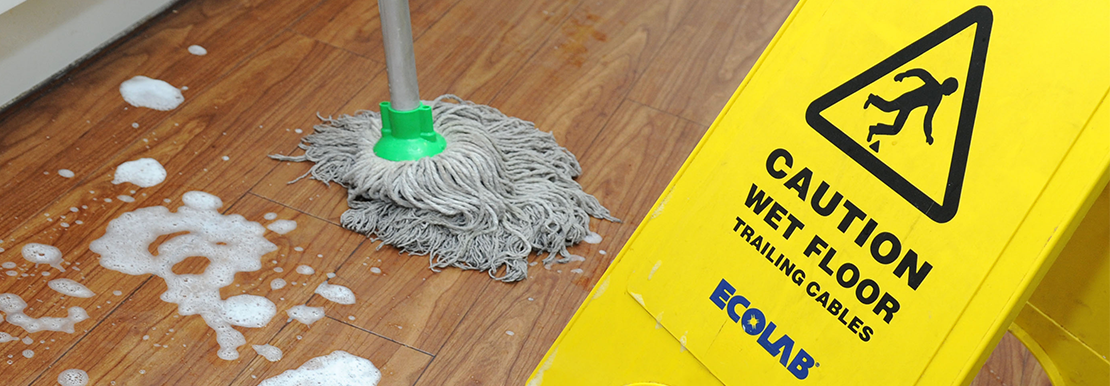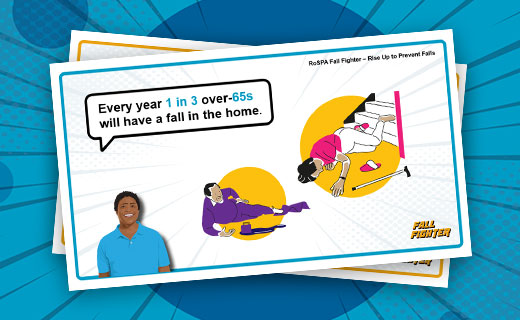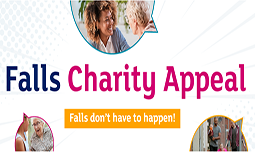 Why are slips, trips and falls important?
Why are slips, trips and falls important?
Slips and trips are the most common cause of injury at work. On average, they cause 40 per cent of all reported major injuries and cost employers over £500m per year. Slips and trips are also the most reported injury to members of the public in workplaces.
Our brand new report, in conjunction with our partners RSA, on new and emerging issues relating to workplace slips, trips and falls has provided many valuable insights for employers. We considered COVID-related issues, the UK ageing workforce, links between fatigue and falls and the impact of falls, and aim to use the results to inform attitudes and behaviours to falls.
Research on slips, trips and falls in the workplace
Take a look at our research
“The results show that there is a significant proportion of business decision-makers who really don’t see slips, trips and falls (STF) as important. The very fact that inevitability, inaction and blame were prevalent in this report suggests that STF are essentially a hidden issue for many employers."
Nathan Davies, Executive Head of Policy and Portfolio at RoSPA
The following information gives advice on how to reduce these statistics and what you can do to prevent slips and trips in your workplace.
What legislation covers slips, trips and falls?
Slips and trips are covered by three main pieces of health and safety legislation:
The Health and Safety at Work Act 1974
Requires employers to ensure the health and safety of all employees and anyone affected by their work, so far as is reasonably practicable – including taking steps to control slip and trip risks. In addition, employees have a duty to take care of their own health and safety and that of others and must use any safety equpiment provided.
The Management of Health and Safety at Work Regulations 1999
Requires employers to assess risks (including slip and trip risks) and, where necessary, take actions to address them.
The Workplace (Health, Safety and Welfare) Regulations 1992
Requires floors to be suitable, in good condition and free from obstructions. People should be able to move around safely.
How can slips, trips and falls be prevented?
Both employers and workers can take measures to help prevent slips or trips from occurring at work. For employers, the key way of avoiding slips and trips is to carry out regular risk assessments, using HSE’s five-step process:
1.
|
Identify the hazards |
2.
|
Consider who might be harmed and how |
3.
|
Evaluate the risks and decide on precautions |
4.
|
Record significant findings |
5.
|
Review your assessment and update if necessary |
A good way of identifying hazards is to ask employees their thoughts, as they may have noticed problems that are not obvious to an employer.
Where do most slips, trips and falls occur?
There are many factors that contribute to slips, trips and falls in your workplace. According to HSE one or more of the following factors are likely to lead to a slip or trip:
How to reduce slips, trips and falls in the workplace
To tackle the above risks, employers should focus on:
Contamination (e.g. oil and dust)
Contamination can occur through spills, leaks or from cleaning activities (e.g. wet floors). You can look at ways to reduce the risk by reviewing current work practices and putting measures in place to ensure access to these areas is restricted.
If it is not possible to avoid contamination, other factors could be altered – for instance the type of flooring, cleaning method/routine or type of footwear worn.
Flooring
The floor in a workplace should be suitable for the type of work activity taking place on it. If a floor is slippery, the causes should be assessed – for example, does the floor need to be chemically treated? Are appropriate cleaning materials and methods being used?
Footwear
HSE says that choosing the right slip-resistant footwear for workers can be tricky and the final choice may have to be a compromise based on a range of factors – e.g. durability, comfort and other safety features. It advises seeking the supplier’s advice, asking for trial pairs to try and ensuring any trial involves a representative sample of the workforce and lasts long enough to produce meaningful results.
Environment
This could include: lighting (could create glare on a shiny floor or inadequate lighting could stop people seeing hazards); noise (could distract people from hazards); weather (rainwater, ice, snow, frost); humidity; and condensation.
Human factors
How people act and behave in their work environment – for instance, dealing with spillages, rushing around, wearing personal protective equipment (PPE) and so on.
Housekeeping
There should be no trailing wires or other obstructions, an effective cleaning regime and adequate storage facilities and rubbish bins to avoid trips.
Design and maintenance
Employers need to ensure that flooring is fitted correctly and properly maintained and that walkways are located correctly, available for use, wide enough and level. Stairs should be suitable, with usable handrails available and risers consistent. Markings can be used to indicate changes in level.
HSE encourages workers to report any slip, trip or near-miss to their employer so they can use the information to prevent further incidents. They should also report problems with flooring or mats or any other safety concern.
Workers can also play their part in keeping the workplace tidy, cleaning up spillages straight away (or arranging for it to be done) and removing items people could trip over (or arranging for them to be removed).
How RoSPA can help your organisation prevent falls
Deliver our FREE Fall Fighter Awareness Sessions in your workplace
Raise employee awareness and provide the knowledge and skills to help prevent falls from happening. Get your people involved by providing fall prevention know-how.
Download the FREE Fall Fighter resources today and start empowering your employees to prevent falls.

Fall Fighter Awareness Sessions for your employee
Download the free resources

Get involved with our Falls Charity Appeal
Help us to save lives